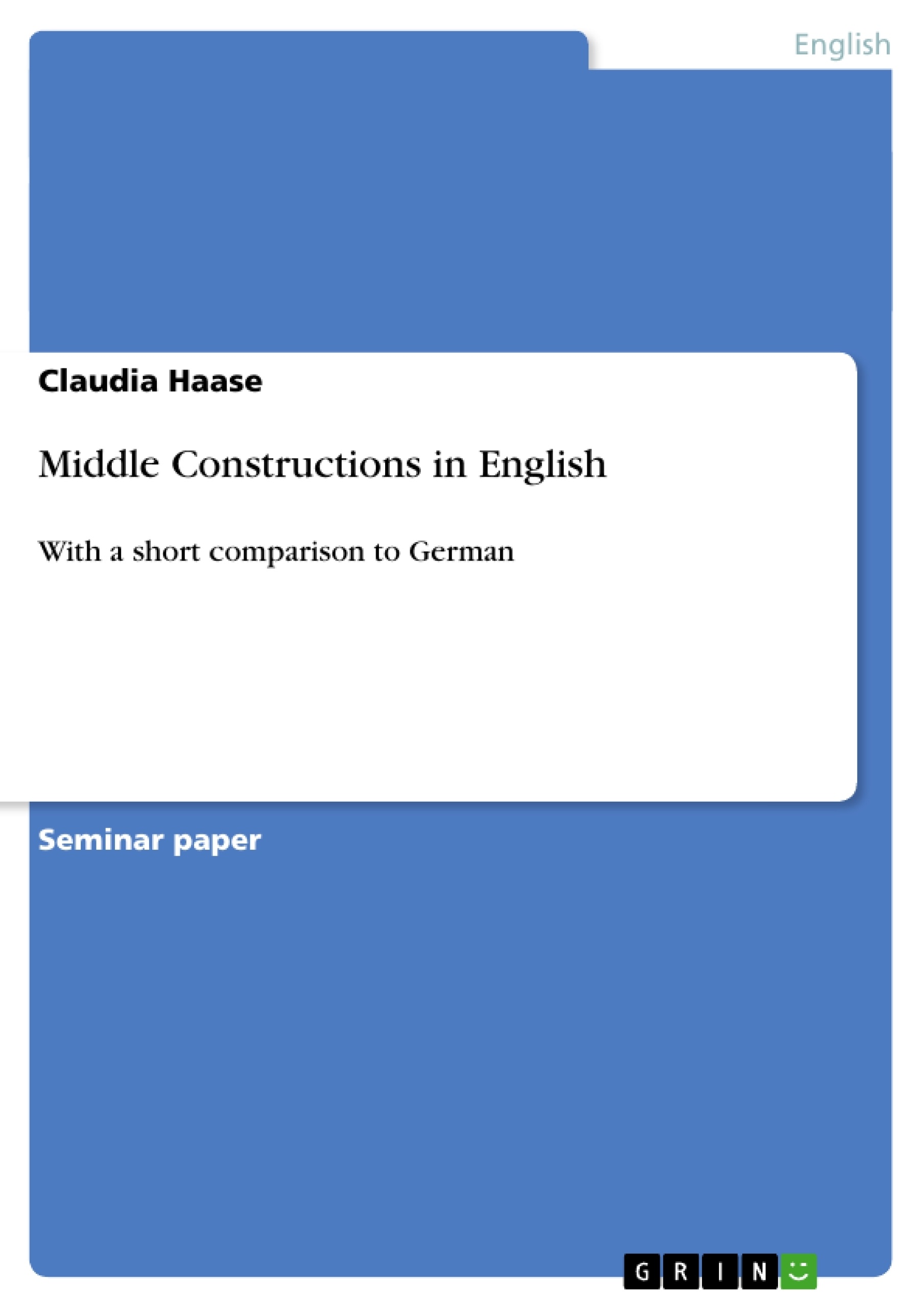With this paper I want to give a survey about middles in English, verbs which form middles, general characteristics, make obvious the relationship between middles and passives and middles and ergatives and in the end compare German and English middles. I dedicated this paper also to the question: Are verbs which form middles transitive or intransitive? Some experts claim, that middle verbs can be both, transitive or intransitive (cf. Dixon), others try to prove that verbs which form middles are always transitive and that with middle formation the transitivity is lost.
Inhaltsverzeichnis (Table of Contents)
- Introduction
- Middle constructions in English
- What are middles?
- Examples
- General characteristics
- Middle formation and its circumstances
- Verbs which form middles
- Middles and passives
- Middles and ergatives
- Transitivity of middles and ergatives
- Sources of confusion
- Middle constructions in German
- Conclusions
Zielsetzung und Themenschwerpunkte (Objectives and Key Themes)
This paper aims to provide an overview of middle constructions in English, focusing on the verbs that form them, their general characteristics, and the relationship between middles and passives and middles and ergatives. The paper will also explore the question of whether verbs that form middles are transitive or intransitive. Finally, the paper will compare German and English middles.
- Characteristics and formation of middle constructions in English
- The relationship between middle constructions and passives
- The relationship between middle constructions and ergatives
- The transitivity of verbs that form middles
- Comparison of middle constructions in English and German
Zusammenfassung der Kapitel (Chapter Summaries)
- Introduction: This chapter introduces the topic of middle constructions in English, outlining the paper's objectives and the debate surrounding the transitivity of middle verbs. It also provides an overview of the paper's structure.
- Middle Constructions in English: This chapter delves into the definition and characteristics of middle constructions. It presents examples, discusses the formation process, and explores the relationship between middles, passives, and ergatives. It also examines the sources of confusion surrounding middle constructions.
Schlüsselwörter (Keywords)
The primary keywords and focus topics of this paper include middle constructions, middle voice, activo-passive, mediopassive, verb transitivity, ergatives, passives, English grammar, German grammar, and comparative linguistics. The paper explores the characteristics and formation of middle constructions, examines their relationship to other grammatical structures, and investigates the transitivity of verbs that form middles.
- Arbeit zitieren
- Claudia Haase (Autor:in), 2000, Middle Constructions in English, München, GRIN Verlag, https://www.grin.com/document/36907



